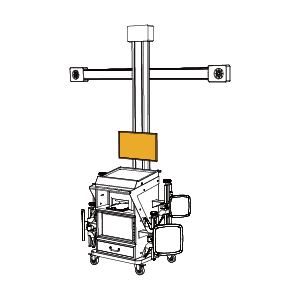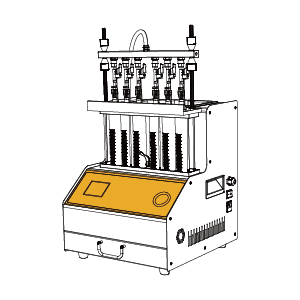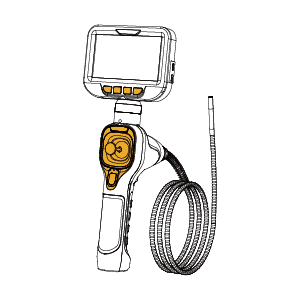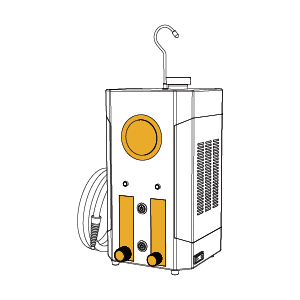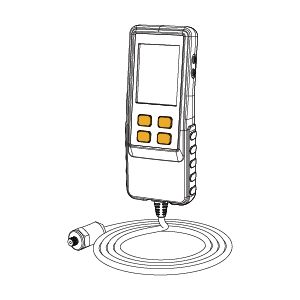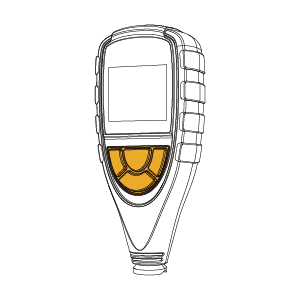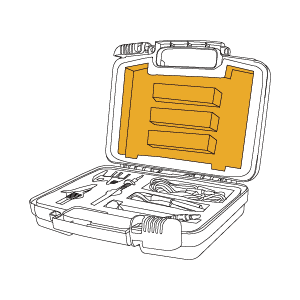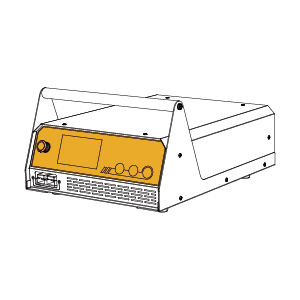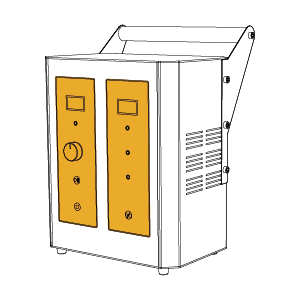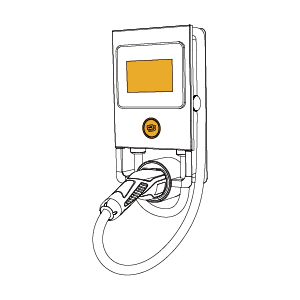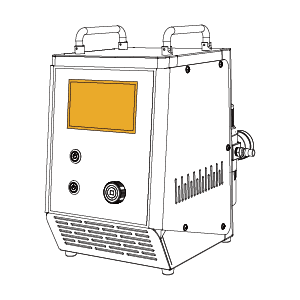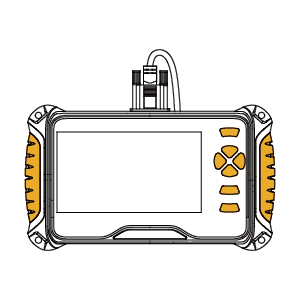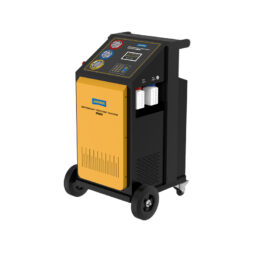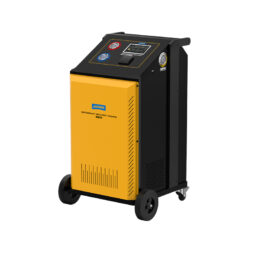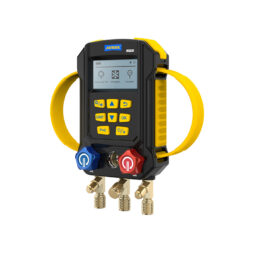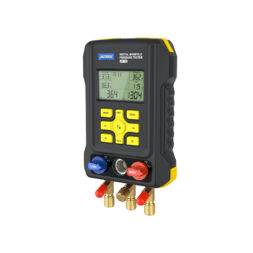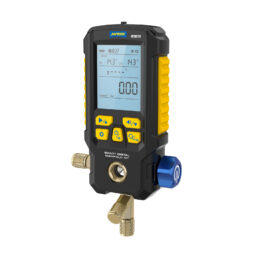AUTOOL Blog, Repair Information
Everything You Need to Know About Car AC Refrigerant
In the sweltering summer, the moment you get into your car, the steering wheel is so hot that you can’t even touch it. You turn on the air conditioner, but it doesn’t work properly. Chances are, you’ve overlooked a key part: car ac refrigerant.
As the “cooling soul” of a car’s air conditioning system, auto ac refrigerant hides in the pipes and works quietly. Once it has issues, even the most expensive car will turn into a “steamer”.
So, today this article will help you understand automotive refrigerant from all aspects. It will also cover basic info about car ac refrigerant recharge, making sure you know how this crucial component keeps your car cool.
What Is Air Conditioning Refrigerant?
Air conditioning refrigerant, also called “refrigerant” or “coolant”, is the core substance that transfers heat in an air conditioning system. It goes through a cycle of physical changes: it turns from liquid to gas (which absorbs heat) and then from gas back to liquid (which releases heat) inside the system. This process moves heat from indoors (or inside a car) to the outdoors, and that’s how it cools the space down.
Both home air conditioners and car air conditioners rely completely on refrigerant circulation to work. For car AC systems specifically, this key substance is often referred to as car ac refrigerant, auto ac refrigerant, or automotive refrigerant. When a car’s AC fails to cool properly, a common solution is to check if there are leaks in the AC pipes. If there are no leaks, another common fix is car ac refrigerant recharge to restore the AC’s cooling performance.
What Are the Common Types of Air Conditioning Refrigerants?
|
Type |
Application Scenario |
Core Features |
|
R-12 |
Automobiles (Traditional) |
This refrigerant was found to be harmful to the environment around 1994, so it was banned and replaced by R-134a in car AC systems. |
|
R134a |
Automobiles (Traditional) |
It was once the mainstream car ac refrigerant for car air conditioners, with mature technology and low cost; however, it has a strong greenhouse effect and has been phased out in some new models. |
|
R1234yf |
Automobiles (New Modelsl) |
It has excellent environmental friendliness, hardly damages the ozone layer, and its greenhouse effect is much lower than that of R134a; it is the standard car ac refrigerant for current new cars though with a relatively high cost. |
You can check your car’s air conditioning refrigerant type in the following ways: First, look through your car manual. It will clearly mark the suitable car ac refrigerant type.
If you don’t have the manual with you, open the engine hood and check the label stuck inside the hood. Usually, this label also notes the automotive refrigerant type.
It’s important to remember that different car models use different auto ac refrigerant types. You must use the exact type that matches your car. Never mix or use the wrong type—this could damage your car’s air conditioning system.
If you still can’t find the refrigerant type through the two methods above, it’s best to contact a professional technician for help. They can accurately identify the right type for your car, which also helps avoid mistakes during car ac refrigerant recharge later.
What Signs Mean You Need to Replace Your Car AC Refrigerant?
When your car shows the following 4 signs, it’s most likely that the car ac refrigerant is insufficient or ineffective. You need to check and replace it:
- Significantly slower cooling speed:When you turn on the AC, it takes much longer for the car interior to cool down than before. Sometimes, it even can’t reach the set temperature for a long time. This is a common sign that the automotive refrigerant is running low.
- Insufficiently cool air from vents:Put your hand near the AC vents. The air temperature is only slightly lower than the room temperature (it should normally drop below 10℃). You may even feel a faint warm breeze mixed in. This means the auto ac refrigerant can’t absorb enough heat to cool the air.
- Unusual noises when the AC runs:After turning on the AC, you hear a “hissing” sound from the engine compartment—this could be a sign of car ac refrigerant leakage. Or, the compressor makes louder noises than usual when it’s running. Both situations require checking the refrigerant first.
- Frost or ice in the AC system:Check the AC evaporator (usually in front of the passenger seat). If there’s a large area of frost or ice on its surface, the insufficient car ac refrigerant may have caused abnormal pressure in the system. Once you notice this, stop using the AC temporarily and check the refrigerant to avoid further damage.
If you confirm the issue is with the refrigerant, a car ac refrigerant recharge will usually fix the problem. But remember to first check for leaks—otherwise, the new refrigerant will leak out quickly.
What do you need to prepare before replacing the refrigerant?
Before replacing it, you must get tools, materials and safety measures ready. This helps avoid damaging the AC system due to wrong operations.
- Prepare tools and materials
Key materials: Use the car ac refrigerant that matches your car (such as R1234yf). Check the label on your vehicle to confirm the type—never mix different types. You’ll also need AC refrigerant oil, which lubricates the compressor. Add it as needed.Tools: Get an AC manifold gauge (to check system pressure), a vacuum pump (to remove moisture and air), a refrigerant charger (or use manual charging in some cases), and a wrench (to take apart pipe connections).
- Check the system’s condition
First, check for leaks: Apply soapy water to AC pipe connections, condensers, evaporators and other parts. If bubbles form, fix the leak first before replacing the automotive refrigerant.Check the compressor: Start the car and turn on the AC. Make sure the compressor runs smoothly and engages properly, with no strange noises. This prevents wasting refrigerant due to compressor faults.
- Take safety precautionsWear protective gloves and goggles
Direct contact with auto ac refrigerant can freeze your skin. Breathing in too much of the gas may also irritate your airways.Choose a well-ventilated area: Never work in a closed space. This stops leaked refrigerant from building up and causing risks.
Specific Steps for Replacing Car AC Refrigerant
1. Recover the old refrigerant
First, connect the high-pressure and low-pressure hoses of the AC manifold gauge to the corresponding high-pressure and low-pressure ports of the car’s AC system.Start the refrigerant recovery machine. It will suck all the remaining old automotive refrigerant in the system into the recovery tank. Never discharge it directly into the atmosphere—it pollutes the environment and is illegal.
2. Evacuate the system (vacuuming)
Disconnect the recovery machine, then connect the vacuum pump to the manifold gauge.Turn on the vacuum pump and evacuate the AC system. Keep it running for at least 30 minutes to make sure all air and moisture in the system are completely removed. Residual moisture will reduce cooling efficiency and may even damage the compressor.
3. Leak test and add refrigerant oil
Turn off the vacuum pump and let the system sit for 10 minutes. Check if the pressure gauge reading changes. If the pressure rises, there is still a leak in the system. You need to recheck and fix the leak before moving on.If there is no leak, follow the vehicle manual’s instructions. Add the right amount of AC refrigerant oil through the low-pressure port of the manifold gauge.
4. Add new refrigerant
First, confirm the car ac refrigerant type matches your vehicle. Then connect the refrigerant tank to the low-pressure port of the manifold gauge.Start the car and turn on the AC. Set it to the maximum cooling fan speed and the lowest temperature to make the compressor run.Slowly open the valve of the refrigerant tank. Add the refrigerant according to the vehicle’s specified amount (usually 400-600g; check the vehicle manual for details). Monitor the system pressure with the gauge during the process to avoid overfilling or underfilling.
5. Test and verify
After adding the refrigerant, close the valve and disconnect the hoses.Keep the AC running for another 10-15 minutes. Check the air temperature at the vents—it should normally be below 10℃. At the same time, observe if the compressor runs smoothly. Make sure there are no unusual noises or leaks. Once confirmed, the car ac refrigerant recharge process is complete.
Want to learn more? Contact us to enjoy a discount for new customers and 3-year warranty!
Email: shop@autooltech.com



